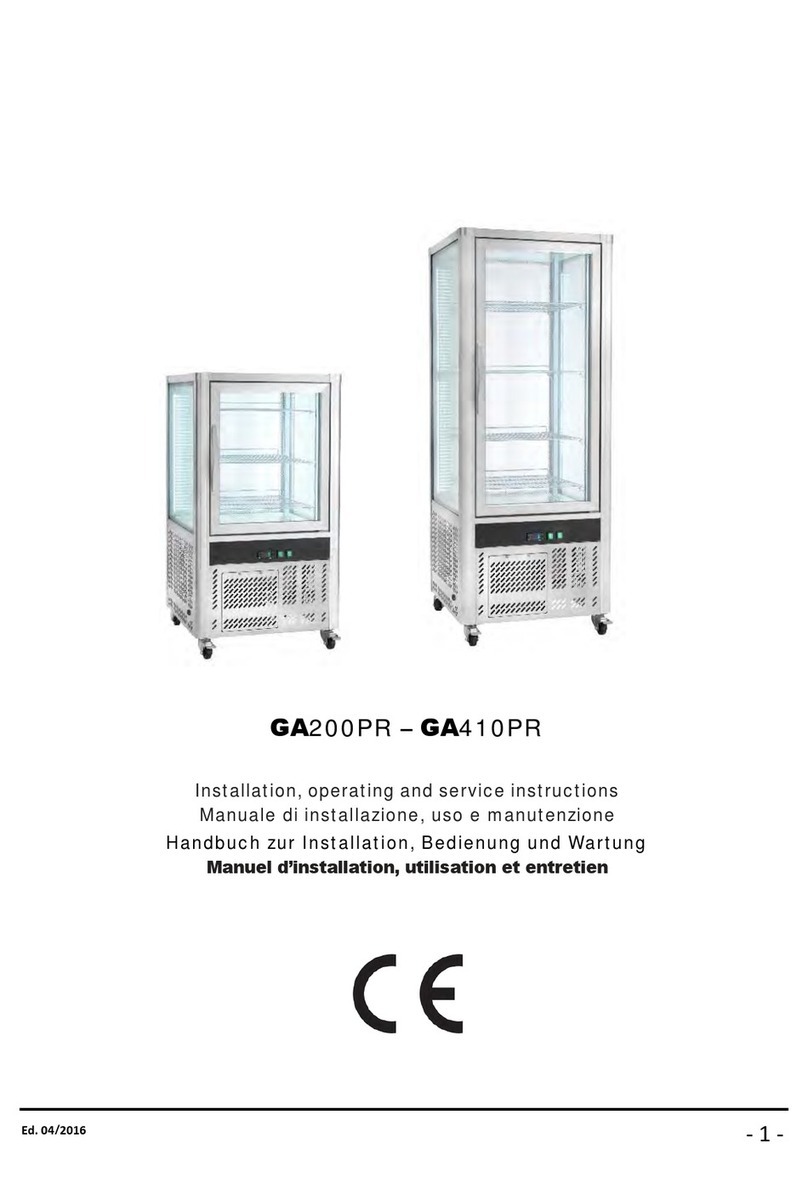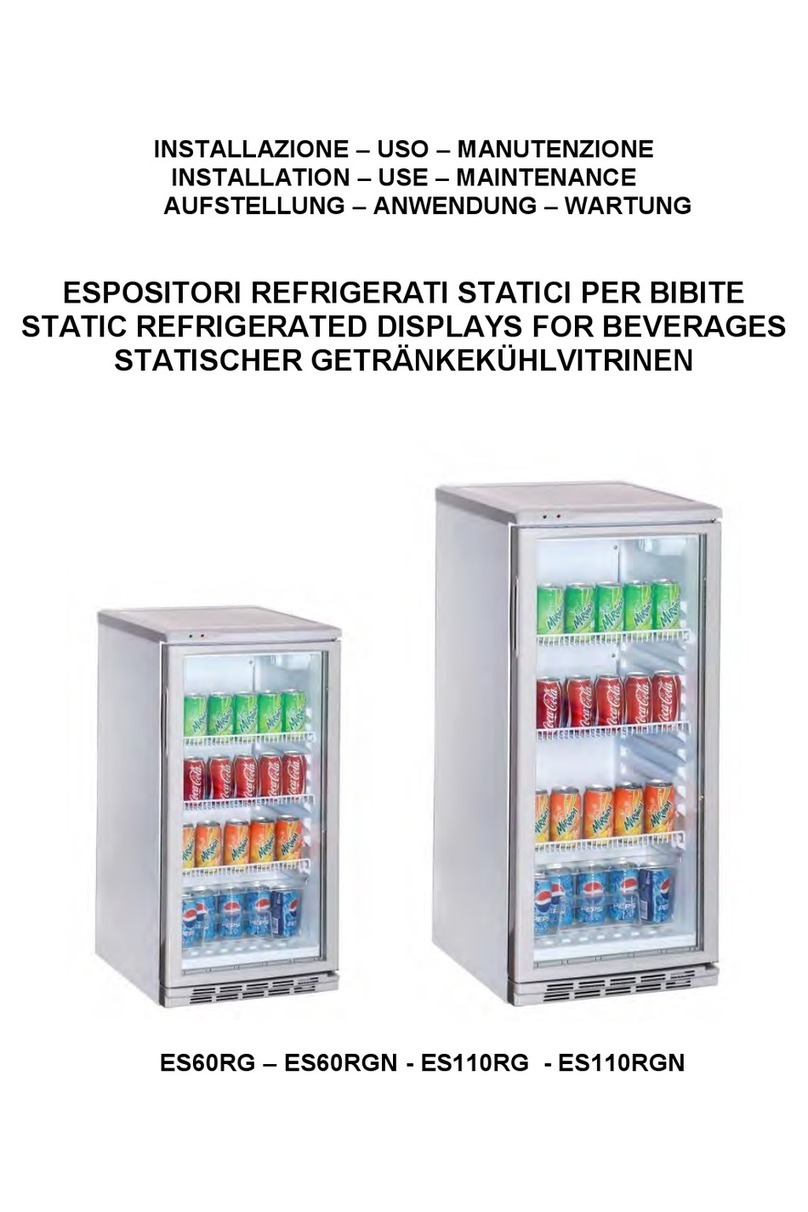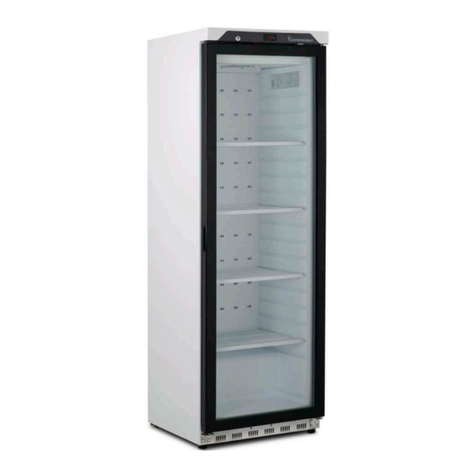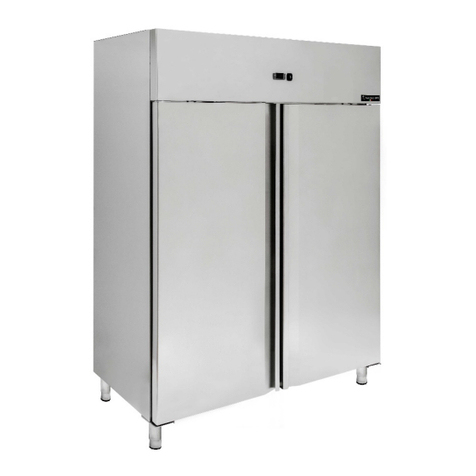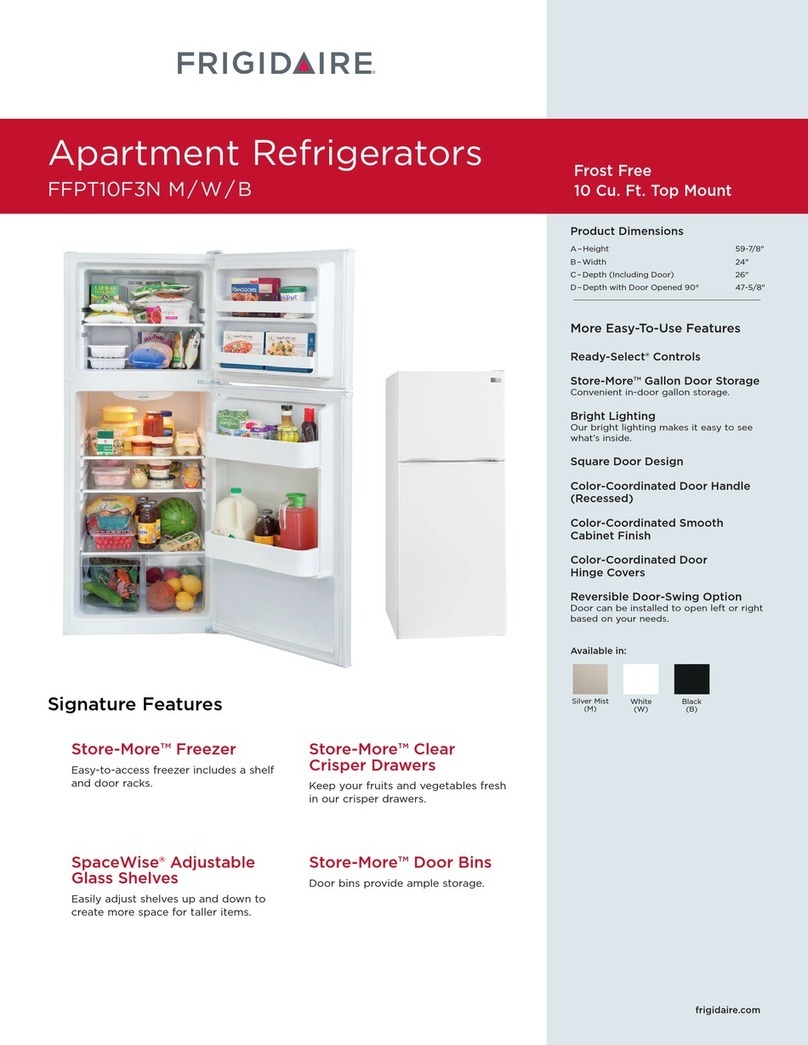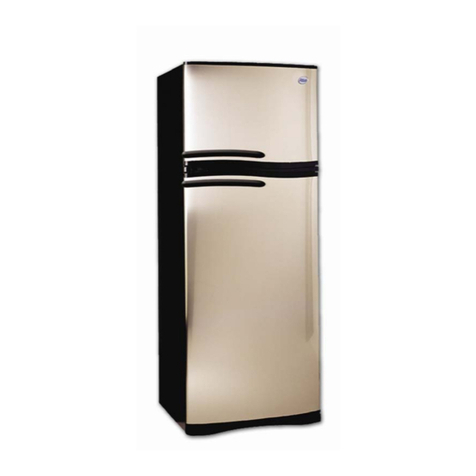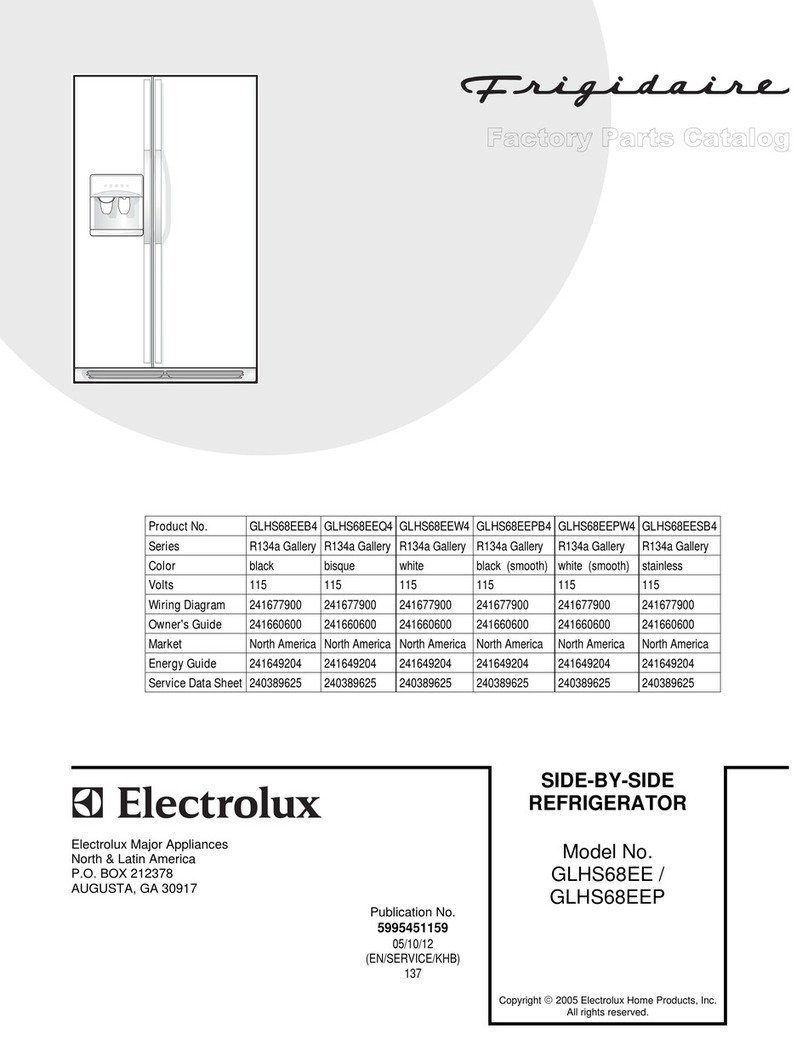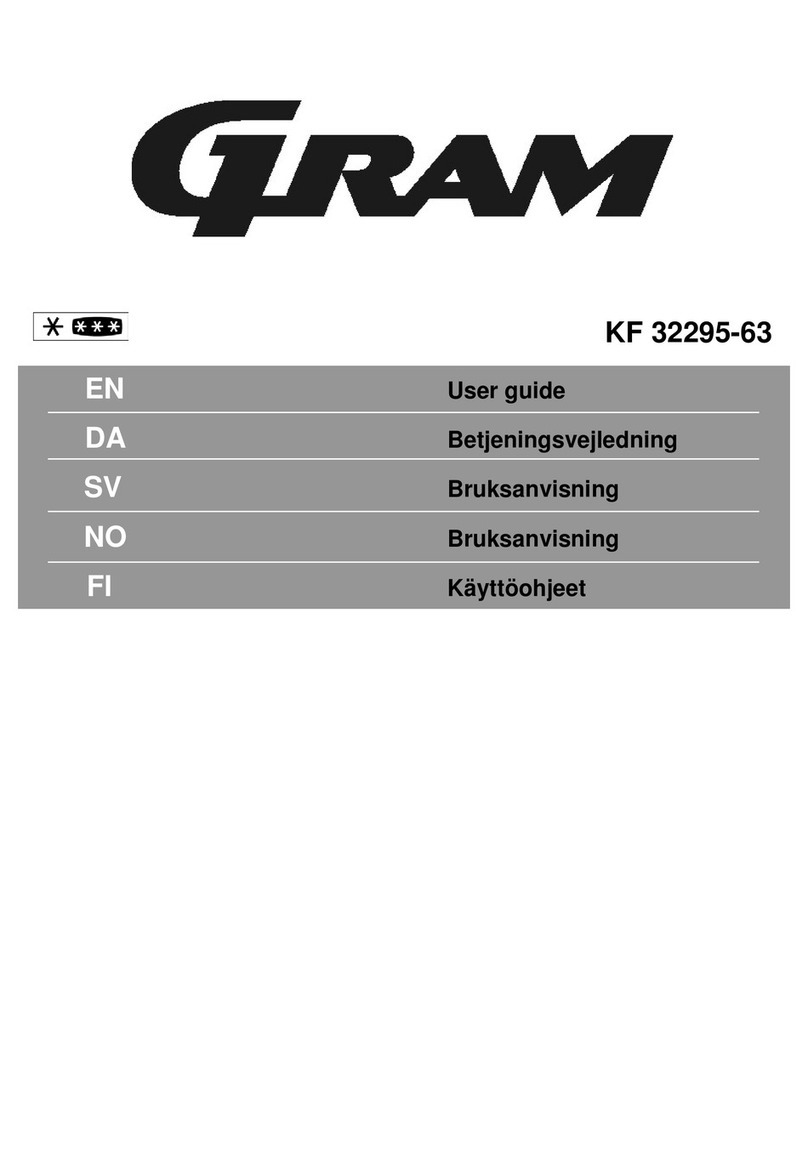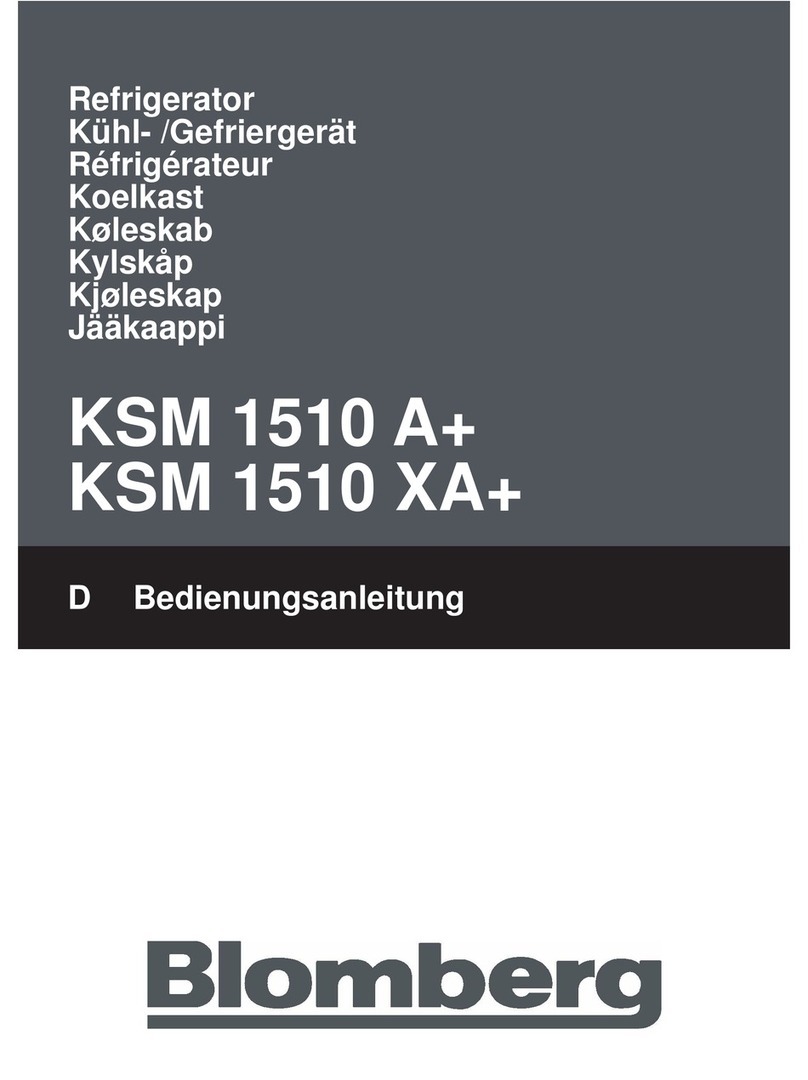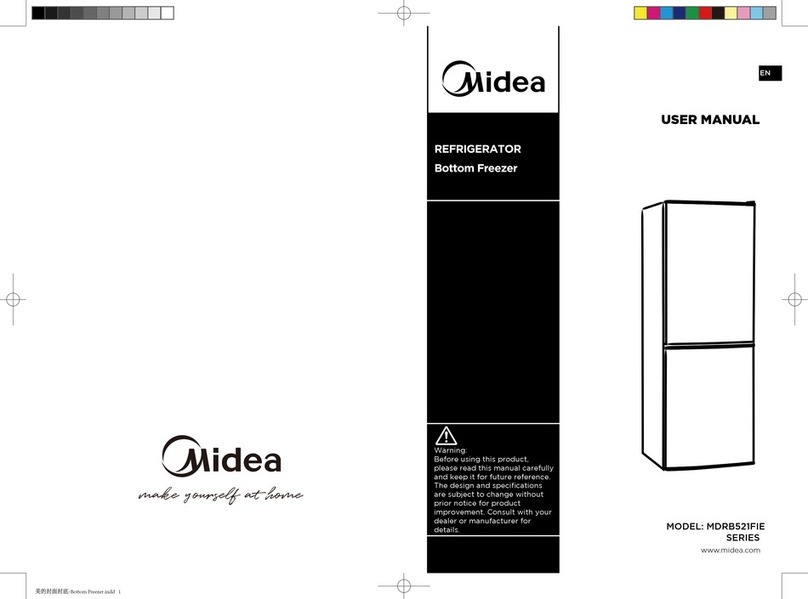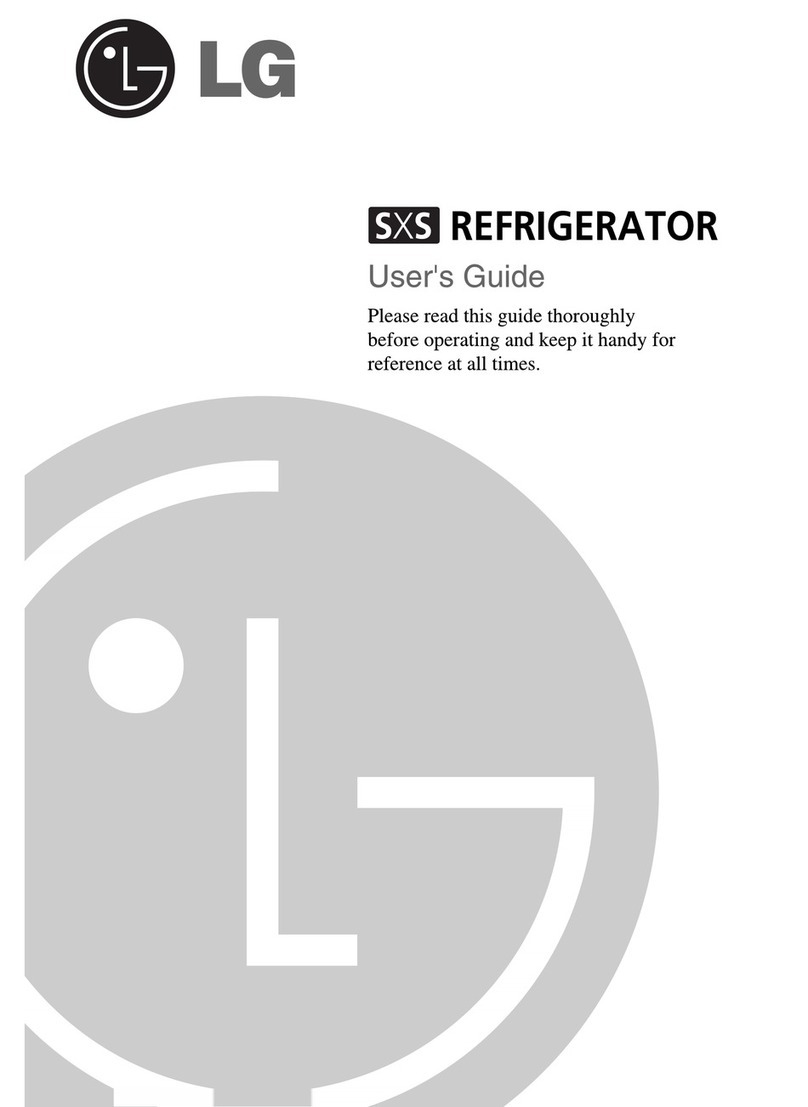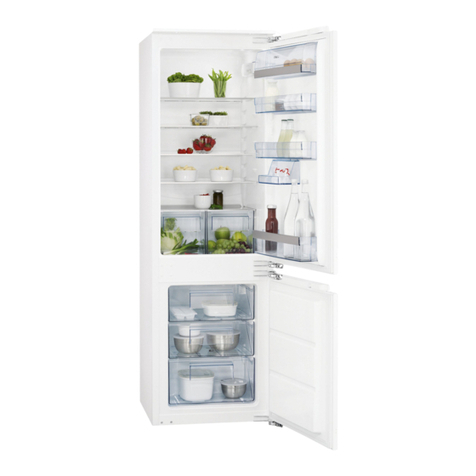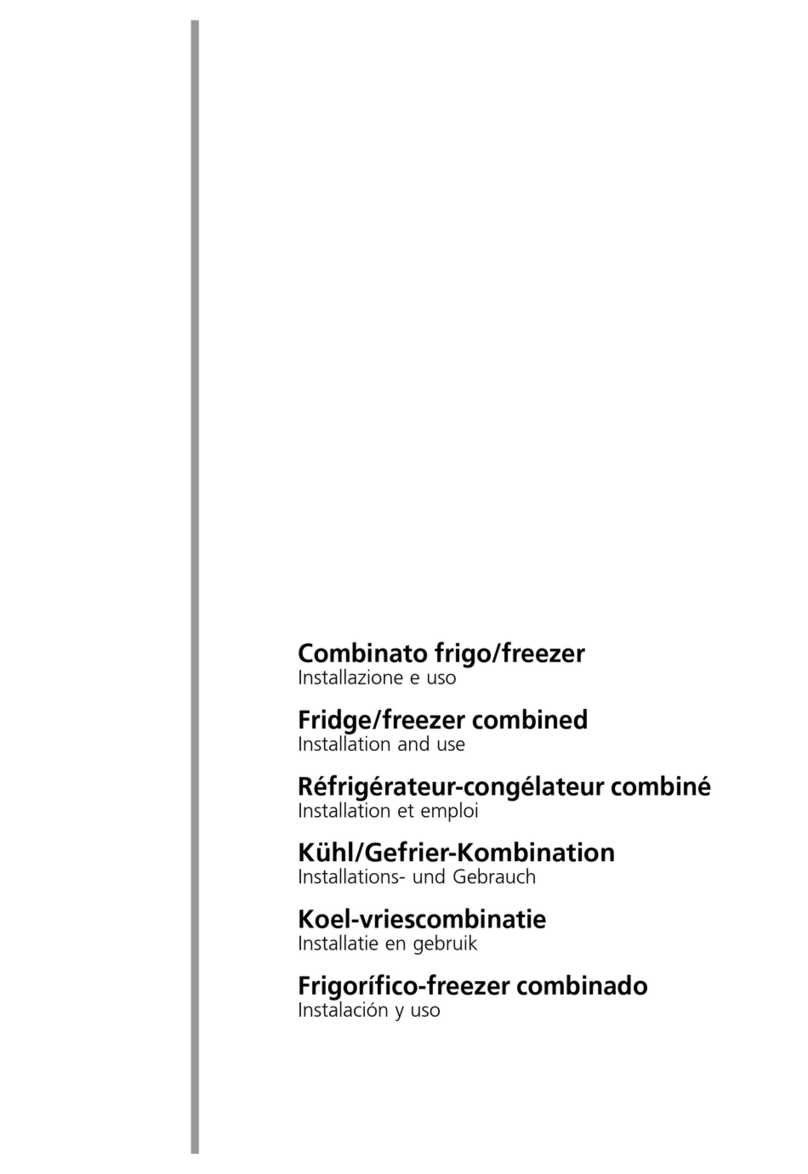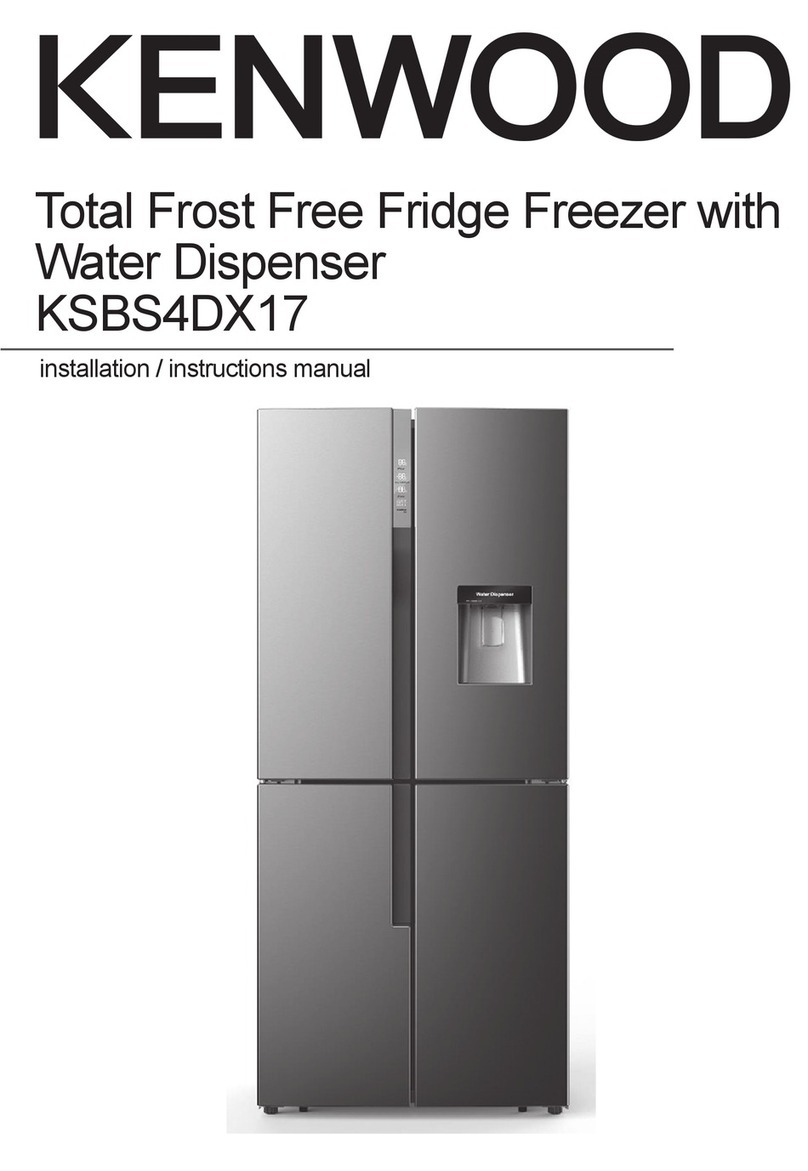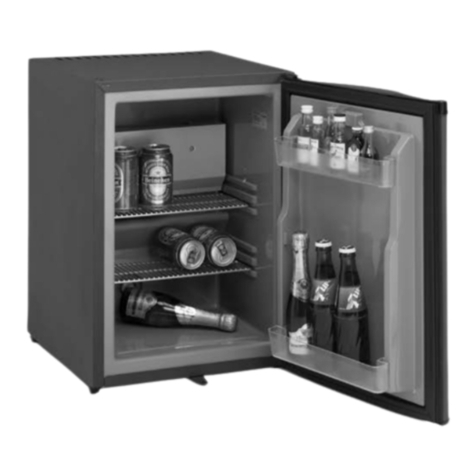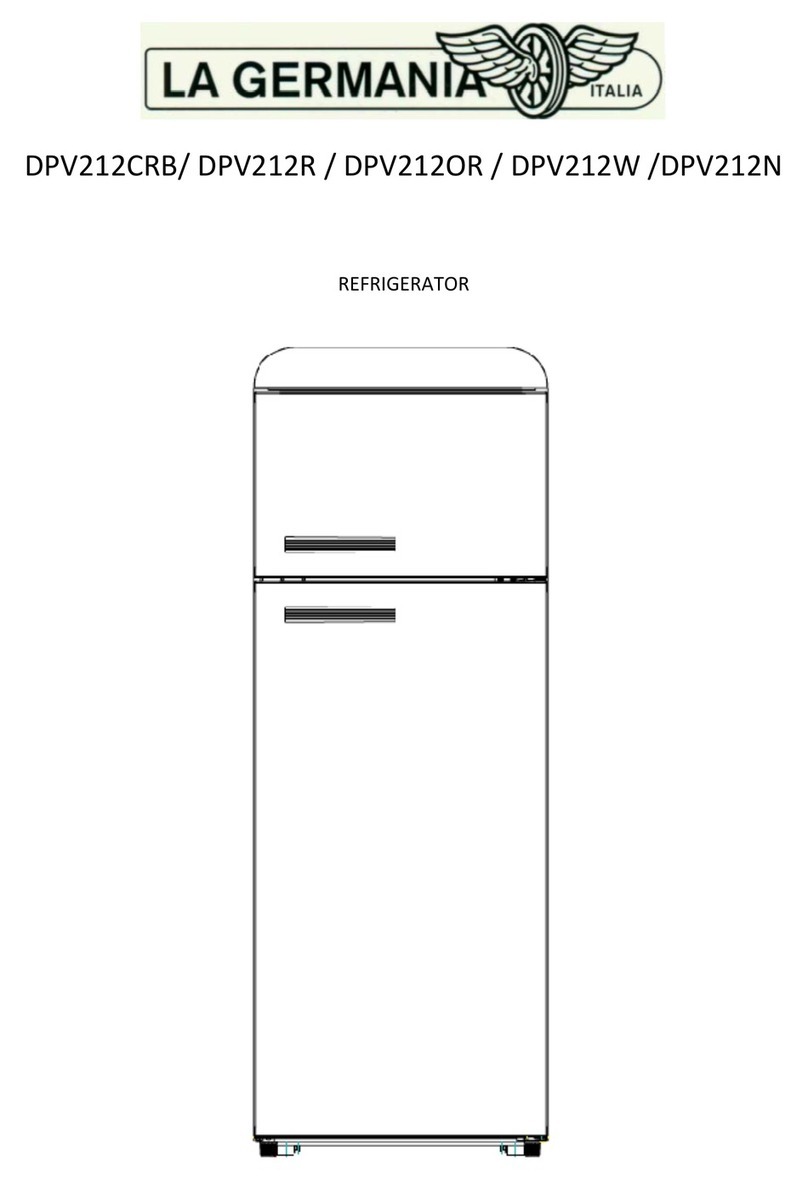Gastrodomus GAP238TNG Quick start guide

INSTALLAZIONE – USO – MANUTENZIONE
INSTALLATION – USE – MAINTENANCE
INSTALLATION – UTILISATION – ENTRETIEN
AUFSTELLUNG – ANWENDUNG – WARTUNG
ESPOSITORI REFRIGERATI STATICI PER BIBITE
STATIC REFRIGERATED DISPLAYS FOR BEVERAGES
VITRINES RÉFRIGÉRÉES STATIQUES POUR BOISSONS
STATISCHER GETRÄNKEKÜHLVITRINEN
GAP238TNG – GAP278TNG

2
INDICE
1. Introduzione
2. Diritti e responsabilità del costruttore
3. Movimentazione ed immagazzinaggio
4. Messa in servizio
5. Caratteristiche tecniche
6. Uso
7. Manutenzione
8. Comportamento in caso di guasto
9. Attività a cura del personale specializzato
10. Smaltimento
11. Figure e tabelle
12. Schemi elettrici
13. Dichiarazione di conformità CE
1. INTRODUZIONE
Questo apparecchio è stato realizzato negli interni, nell’estetica e nella
componentistica secondo le esigenze specifiche dei nostri clienti, è inoltre
stato controllato funzionalmente ed esteticamente in ogni sua parte prima
dell’invio definitivo. Usate quindi l’apparecchio attendendovi a quanto qui sotto
suggerito e rimarrà per lungo tempo al vostro servizio.
2. DIRITTI E RESPONSABILITA’ DEL COSTRUTTORE
È vietata la riproduzione parziale o totale delle presenti istruzioni senza
l’autorizzazione scritta della ditta. I disegni riprodotti sono di carattere
generale e possono essere difformi in alcuni particolari dall’apparecchio
consegnato. Il costruttore declina ogni responsabilità per danni causati a
persone o cose dovuti a: inosservanza di avvertenze ed istruzioni contenute
nel presente testo; inosservanza dei limiti di impiego dell’apparecchio; uso
improprio, errato, irragionevole o da parte del personale inesperto; uso non
conforme alle normative locali; modifiche non autorizzate e/o riparazioni
effettuate da personale non qualificato/autorizzato; utilizzo di
ricambi/accessori non originali; eventi eccezionali. Il costruttore si riserva
inoltre il diritto di apportare tutte le modifiche ritenute opportune senza alcun
preavviso.

3
3. MOVIMENTAZIONE ED IMMAGAZZINAGGIO
L’apparecchio è contenuto in un imballo costituito da un pianale in legno,
angolari rigidi, protezioni di polistirolo e film plastico. Pesi ed ingombri sono
indicati nella tabella CARATTERISTICHE TECNICHE del capitolo 11. In
attesa della collocazione definitiva immagazzinare in ambiente coperto a
temperatura compresa tra -25°/+55°C ed umidità relativa compresa tra
30/95%.
4. MESSA IN SERVIZIO
Leggere attentamente le etichette sull’apparecchio, non coprirle per nessuna
ragione e sostituirle immediatamente in caso venissero danneggiate. Non
togliere le protezioni o pannellature che richiedono l’uso di utensili per essere
rimosse.
Posizionamento
Assicurarsi che, dal punto di vista degli ingombri (vedi tabella capitolo 11), lo
spazio riservato all’apparecchio ne permetta il corretto utilizzo e la facile
manutenzione. Sistemare l’apparecchio in piano avvitando i piedini livellatori e
registrandoli, dopo avendo disimballato rimuovendo tutte le protezioni
predisposte dall’azienda. Per limitare il rischio di scarica elettrica statica
dovuta alla rimozione della plastica protettiva, si consiglia di rimuovere la
plastica lentamente e in piccoli pezzi. Spostare l’apparecchio sollevandolo
solo dal fondo inferiore esterno, per evitare di danneggiare i piedini di
appoggio e gli altri equipaggiamenti. Se l’apparecchio, durante la
movimentazione, è stato posizionato orizzontalmente, attendere due ore
prima di procedere all’accensione dell’apparecchio. L’apparecchio non deve
essere installato in ambienti pericolosi, all’aria aperta o esposto a pioggia,
lontano da fonti di calore (termosifoni, faretti ecc..), al riparo dai raggi solari e
da correnti d’aria. L’aria deve circolare liberamente attraverso l’unità di
condensa. Il mancato rispetto delle condizioni riportati, porta ad una riduzione
della prestazione dell’apparecchio.
Pulizia iniziale
Prima dell’allacciamento alla rete elettrica pulire adeguatamente
l’apparecchio. Per le parti interne usare detersivi antibatterici, per le parti in
plastica è sufficiente utilizzare panni inumiditi. Asciugare con un panno
morbido e pulito. Non usare detersivi aggressivi, abrasivi ne solventi.
Posizionamento componenti ed accessori
Le griglie sono sostenute da 4 supporti regolabili. Provvedere a sistemare i
supporti griglie all’interno della cella nella posizione più adatta all’uso.
Portata max. singola griglia: 13Kg (AKP238TNG) / 15Kg (AKP278TNG).
Il peso si intende uniformemente distribuito sulla griglia. Una lieve flessione
della griglia è assolutamente normale.
Portata max. totale dell’apparecchiatura:
40Kg (AKP238TNG) – 50Kg (AKP278TNG)

4
Collegamento alla rete elettrica
Assicurarsi che l’impianto di alimentazione elettrico rispetti le leggi vigenti. Il
cavo di alimentazione deve essere ben steso (evitare arrotolamenti o
sovrapposizioni) in posizione non esposta ad eventuali urti o manomissioni,
non deve essere in prossimità di liquidi od acqua e di fonti di calore. Nel caso
si danneggiasse, farlo sostituire immediatamente da personale qualificato.
Evitare sempre l’uso di adattatori.
5. CARATTERISTICHE TECNICHE
Potenze assorbite ed ingombri
La potenza assorbita, gli ingombri esterni ed interni relativi ai vari modelli e
nelle varie configurazioni sono indicati nella tabella del capitolo 11.
Rumorosità e vibrazioni
Il livello sonoro degli apparecchi con unità condensatrice incorporate è
inferiore ai 70 dB. In condizioni normali l’apparecchio non genera vibrazioni
dannose all’ambiente circostante.
6. USO
Azionamento
Questi armadi sono azionati tramite un termostato. Le operazioni consentite
all’utente sono
Accensione/spegnimento(fig. 1)
Il termostato può essere regolato dalla posizione 1 alla posizione 7: sul
display apparirà la temperatura presente nell’armadio al momento. Per
spegnere l’apparecchiatura, scollegare la spina dalla presa.
Il pulsante 1/0 a sinistra del display serve ad accendere e spegnere
l’illuminazione dell’apparecchiatura.
Impostazione temperatura cella
La temperatura dell’apparecchio è regolabile da +2 a +8 °C.
Stoccaggio degli alimenti
Allo scopo di ottenere le migliori prestazioni dell’armadio è necessario
rispettare le seguenti indicazioni: introdurre la merce nell’apparecchio dopo
che esso avrà raggiunto la temperatura desiderata leggibile sul display; non
introdurre al suo interno cibi caldi o liquidi scoperti; confezionare e proteggere
gli alimenti; non limitare la circolazione dell’aria all’interno con ostacoli; evitare
frequenti e prolungate aperture delle porte; attendere alcuni istanti prima di
riaprire la porta appena chiusa.
Sbrinamento
L’apparecchiatura si sbrina automaticamente quando il compressore si
arresta.
7. MANUTENZIONE
Pulizia periodica della cella e del condensatore
Prima di iniziare la pulizia spegnere l’apparecchio e scollegare la spina dalla
presa. Pulire almeno una volta alla settimana il vano interno seguendo le

5
indicazioni (vedi Pulizia iniziale). Pulire il condensatore posto nella parte
posteriore. Prima di iniziare la pulizia, chiudere e proteggere l’armadio, poi
asportare con una spazzola e con un aspirapolvere la polvere depositata sulla
superficie frontale del condensatore.
Inattività dell’apparecchio
Nei periodi di inattività scollegare la spina dalla presa, pulire accuratamente
come per una pulizia periodica e lasciare circolare l’aria nella cella coprendo
l’armadio con un telo di stoffa.
8. COMPORTAMENTO IN CASO DI GUASTO
Se l’apparecchio non funziona controllare che:
la spina sia correttamente inserita nella presa;
il cavo di alimentazione non sia danneggiato.
Se la temperatura prestabilita non viene raggiunta controllare che:
il termostato sia posizionato da 1 a 7;
il condensatore non sia intasato dalla polvere;
l’apparecchio non si trovi in prossimità di fonti di calore o la sua unità
condensatrice sia poco aerata;
gli alimenti stoccati o altri oggetti non impediscano la corretta chiusura
dell’armadio;
l’apparecchio non lavori in condizioni anomale (inserimento di alimenti
caldi, in eccesso e/o maldisposti).
Se l’apparecchio perde acqua controllare che:
il dispositivo di eliminazione acqua non sia danneggiato, che lo
scarico sia stato ben canalizzato e che non sia ostruito;
l’apparecchio sia stato messo in piano.
Se l’apparecchio è rumoroso controllare che:
non ci siano viti o bulloni svitati;
l’apparecchio sia ben livellato e che i piedini appoggino stabilmente
sul pavimento.
Se dopo tutti questi controlli il malfunzionamento dovesse permanere è
opportuno rivolgersi all’assistenza tecnica, indicando la sigla del modello ed il
numero di matricola (ambedue rilevabili dalla targhetta dati tecnici).
9. ATTIVITA’ A CURA DI PERSONALE SPECIALIZZATO
Sostituzione di componenti
Prima di qualsiasi operazione di manutenzione scollegare la spina dalla rete
elettrica.
10. SMALTIMENTO
Lo smaltimento dell’apparecchio deve essere affidato a ditte specializzate di
settore secondo quanto previsto da leggi ed enti locali.
L’apparecchio è costituito da:
struttura in lamiera d’acciaio;

6
componenti e cablaggio elettrici;
compressore elettrico;
materiali plastici;
fluido frigorigeno da non disperdere nell’ambiente.
TUTTE LE RESPONSABILITA’ PER IL MANCATO RISPETTO DELLE
VIGENTI LEGGI LOCALI RICADRANNO SUL PROPRIETARIO.

7
INDEX
1 Introduction
2 Manufacturer’s retained rights and responsibility
3 Transportation and storage
4 Commissioning
5 Technical characteristics
6 Usage
7 Maintenance
8 Operation in the case of failures
9 Duties to be undertaken by qualified engineer
10 Dismantling
11 Pictures and tables
12 Electrical diagram
13 Declaration of conformity CE
1. INTRODUCTION
This equipment has been produced be internally or externally in its
aesthetics and compensability, in response to the specific exigencies of our
clientele, furthermore it has been mechanically and aesthetically checked
in every aspect before despatch. For the correct utilisation of the
equipment, careful read the instructions. Observe all the recommendations
contained therein, consign this manual which constitutes an integral part of
the essence of the equipment to the end user who is requested to retain it
for future consultation. By observing these recommendations, you will
guarantee the extended trouble-free operation of the equipment.
2. MANUFACTURER’S RETAINED RIGHTS AND RESPONSIBILITY
It is forbidden to reproduce, partially or totally, these instructions without
the express authorisation oft he manufacturers. The drawings reproduced
may be considered as a general guide, and may vary in some particulars to
the equipment consigned. The manufacturers deny all responsibility to third
parties in consequence of: non observance oft he warnings and
instructions contained in the text; non observance of the parameters of
utilisation of the equipment; unreasonable or wrongful utilisation by un-
trained personnel; use non-conforming to local statutes; unauthorised
modifications and/or repairs undertaken by non-trained or authorised
personnel; utilisation of non original spares or accessories; exceptional
occurrences. The manufacturers reserve the right to introduce any
modification deemed necessary without warning.

8
3. TRANSPORTATION AND STORAGE
The equipment is wrapped in absorbent material and contained and fixed
within a wooden platform and stiff card-board corner, weights and
dimensions are reported in the table (pls. see chapter 11 TECHNICAL
CHARACTERISTICS). Whilst awaiting by definitive collection, these should
be stored within a protected and covered environment at a temperature
between -25° / +55°C, with ambient humidity between 30 to 95%.
4. COMMISSIONING
Carefully read the label on the equipment, do not cover for any reason
whatsoever, and replace them immediately if damaged. Do not remove
protection or panelling that require the usage of tools.
Positioning
Ensure that in respect oft he dimensions (pls. see table from chapter 11)
the space reserved for the equipment permits its correct utilisation and
ease of maintenance. After carefully unpacking the display case, remove
the protection film and all of the manufacturer’s material which safeguards
the item in transit. Place the cabinet on a flat surface and level it by
screwing and adjusting the levelling legs to ensure its efficient operation.
The cabinet must be lifted only form the exterior of the base to avoid the
possibility of damage. If the device has been positioned horizontally
(integral condensing unit), wait two hours before activating it. The
equipment must not be installed within explosive ambience, in the open air
or exposed to rain, distant form heat sources (radiators, direct lighting, etc.)
and protected from direct sunlight and draughts. Air circulation must be
freely maintained around the condensing unit, be it integral or remote.
Inobservance of these specific conditions will detrimentally affect the
cabinet.
Initial cleaning
Bevor use all parts of the cabinet should be cleaned. For the internal parts
use an antibacterial detergent, for the plastic parts use a moistened cloth.
Dry with a soft clean cloth. Do not use harsh or abrasive solvents or
detergents.
Positioning of components and accessories
The grills are supported by 4 adjustable supports. Position the grill
supports inside the appliance in the most suitable position for the use.
Maximum single grid capacity:
13Kg (AKP238TNG) / 15kg (AKP278TNG).
The weight must be evenly distributed on each grill. A slight deformation of
the grill due to the weight is absolutely normal.
Maximum overall appliance capacity:
40kg (AKP238TNG) - 50Kg (AKP278TNG)

9
Electrical connection
Make sure the electrical supply system complies with applicable laws. The
power cord must be stretched (avoid twisting or overlapping) in a position
not exposed to possible knocks or tampering, should not be in the vicinity
of liquid or water and heat sources. If it is damaged, have it replaced
immediately by qualified personnel. Always avoid the use of adapters.
5. TECHNICAL CHARACTERISTICS
Absorbed ladings and dimensions
The absorbed power, the external and internal dimensions for the various
models and in various configurations are shown in the table from chapter
11.
Noise and vibration
The sound level of the equipment fitted with integral hermetic condensing
unit does not exceed 70dB. Under normal conditions the equipment does
not generate vibrations which affect the surroundings.
6. USE
Activation
These cabinets are activated by a Thermostat. The operations available to
the user are:
Startup/shutdown oft he unit (fig. 1)
The thermostat may be adjusted from position 1 to position 7: the present
cell temperature will appear on the display. To turn off the cabinet,
disconnect the power plug.
The 1/0 switch to the left of the display turns on and off the light of the
appliance.
Setting the cell temperature
The appliance temperature can be set from +2 to +8 °C.
Storage of food-stuffs
In order to obtain the best functioning of the appliance, it is necessary to
observe the following instructions: place the merchandise into the unit only
after it has reached the desired operating temperature given on the display;
do not place uncovered hot foods or liquids inside the unit; package and
protect foods when possible; do not limit the circulation of air inside the cell
with obstacles; avoid frequent or prolonged openings of the door; wait a
few moments before reopening the door just after it has been closed.
Defrosting
The appliance defrosts automatically when the compressor is stopped.
7. MAINTENANCE
Periodic cleaning of cell and condenser
Before starting cleaning put the switch off and disconnect the plug. Is
important to clean the internal basin at least once a week by following the

10
directions see initial cleaning. Clean the condenser located in the rear.
Before starting cleaning, close and protect the unit, then remove the dust
which has deposited on the front surface of the condenser using a broom
or vacuum cleaner.
Inactivity oft he device
During periods of inactivity, put the switch off and disconnect the plug,
accurately clean the unit, as per periodic cleanings, allow air to circulate in
the cell by covering the unit with a material that allows the device to
transpire.
8. OPERATIONS IN THE CASE OF FAILURES
If the device is not functioning, make sure that:
the plug has been correctly inserted into the socket;
the supply cord is not damaged.
If the pre-set temperature is not reached make sure that:
the thermostat is positioned from 1 to 7;
the condenser is not blocked with dust;
the device is not located near heat sources or its condensing unit is
not well-aired;
the stored foods or other objects do not inhibit the proper closing of
the unit;
the device is not working in anomalous conditions (overloaded,
loaded with hot food, or loaded in a way that prevents proper air
circulation).
If the device leaks water make sure that:
the water elimination device is not damaged, that the discharge
has been well channeled, and that is not blocked;
the device has been positioned at a flat level.
It the device is making a lot of noise make sure that:
does not have loose screws or bolts;
the device has been correctly leveled and the feet are fixed in a
stable position.
If after all these controls the malfunctioning continues, it is advisable to
contact the technical assistance, indicating the model trade name, the
serial number (both can be found on the technical data plate).
9. DUTIES WHICH MUST BE UNDERTAKEN BY QUALIFIED
ENGINEER
Replacement of spare parts:
Before commencing any maintenance work, disconnect the plug from the
mains.

11
10. DEMOLITION
The scrapping of the cabinet requires to be undertaken by specialized
company, licensed by the local authorities, and observing local statutes.
The cabinet consists of:
structure in steel plate;
electrical components and cables;
electrical compressor;
plastic materials;
refrigerant fluid which must not be discharged into the atmosphere.
ALL THE RESPONSIBILITY FOR THE FAILURE TO RESPECT THE
EXISTING LOCAL STATUTES ARE THE RESPONSIBILITY OF THE
OWNER.

12
INDEX
1. Introduction
2. Droit et responsabilités du constructeur
3. Manutention et stockage
4. Mise en service
5. Caractéristiques techniques
6. Utilisation
7. Entretien
8. Operations à effectuer en cas de pannes
9. Activités par la charge du personnel spécialisé
10. Démolition
11. Illustration et tabelle
12. Schéma electrique
13. Déclaration de conformité CE
1. INTRODUCTION
Cet appareil a été realize conformément aux exigences spécifiques de nos
clients tant pour son interne que pour son esthétique et ses composant
électroniques, de plus, fonctionnement et esthétique de chacun de ses
éléments ont été contrôlés avant sa sortie de l’usine. Utilisé comme conseillé
l’appareil restera longtemps à Votre service.
2. DROITS ET RESPONSABILITES DU CONSTRUCTEUR
Il est interdit de reproduire partiellement du totalement le mode d’emploi ci-
présent sans une autorisation écrite de la société. Les dessins reproduits
présentent un caractère général et certains détails peuvent être différents de
l’appareil livré. Le constructeur decline toute responsabilité pour d’éventuels
dommages corporels ou matériels dus: au non-respect des consignes et
instructions continues dans ce texte; au non respect des limites d’utilisation de
l’appareil; à une utilisation impropre, erronée, déraisonnable ou à une
utilisation de l’appareil par du personnel non qualifié; à une utilisation non
conforme aux normes en vigueur; à des modifications non autorisées et/ou à
des réparations effectue è es par du personnel non qualifié ou non autorisé; à
une utilisation de pièces de rechange ou d’accessoires non d’origine; à des
événements exceptionnels. En outré le constructeur se reserve le droit
d’apporter toute modification jugée opportune sans aucun préavis.

13
3. MANUTENTION ET STOCKAGE
L’appareil est conditionné dans un emballage constitué d’un socle en bois, de
cales de renforcement, de protections en polystyrene et d’un film plastique.
Poids et volumes sont indiquée dans le tableau ci-dessous et dans chapitre
11 CARACTERISTIQUES TECHNIQUES. Avant la mise en place définitive,
garder l’appareil dans un lieu couvert, à une température comprise entre -25° /
+55°C et à un taux d’humidité compris entre 30 et 95%.
4. MISE EN SERVICE
Lire attentivement les étiquettes sur l’appareil, ne les couvrir sous aucun
prétexte et si nécessaire, les remplacer aussitôt qu’elles sont abimées.
N’enlever aucun panneau ou protection lorsque pour ce faire il est nécessaire
d’utiliser des outils spécifiques.
Positionnement
S’assurer que l’espace réservé à l’appareil en permette une utilisation
correcte et un entretien facile (voir le chapitre 11). Après avoir désemballé
l’appareil et enlevé toutes les protections mises par l’usine, le placer sur un
plan horizontal visser et régler les pieds de mise à niveau. Détacher et enlever
le film plastique protégeant la tôle par petits morceaux aux fins de limiter la
production d’électricité statique. Déplacer l’appareil en le soulevant seulement
par le plan inférieur externe, afin d’éviter d’endommager les pieds d’appui ou
tut autre partied l’appareil. Si l’appareil a été couché horizontalement pendant
la mise en place, attendre deux heures avant pour procéder avec l’activation
de l’appareil. Tout emballage et protection enlevés doivent être confiés aux
centres de récupération appropriés conformément aux normes en vigueur.
L’appareil ne doit être place dans un environnement présentant un risque
d’explosion, à l’air libre, exposé la pluie, loin de toute source de chaleur
(radiateurs, spots, etc.) et à l’abri des rayons solaires et des courants d’air.
L’air doit pouvoir circuler librement dans le groupe frigorifique. Ignorer les
conditions énumérées ci-dessus entrainera une diminution du rendement de
l’appareil.
Nettoyage initial
Avant d’effectuer le branchement électrique et d’utiliser l’appareil, le nettoyer
de façon adéquate. Pour les parties intérieures utiliser un détersif
antibactérien, pour toutes les parties en plastique des chiffons humides.
Essuyer avec un chiffon doux et propre. N’utiliser ni des détersifs agressifs ou
abrasifs, ni des solvants.

14
Positionnement des composants et des accessoires
Les grilles sont soutenues par 4 supports prévus à cet effet. Installer les
supports à l’intérieur du compartiment dans la position souhaitée.
Capacité maximale individuelle de la grille:
13 kg (AKP238TNG) / 15 kg (AKP278TNG).
Le poids doit être réparti uniformément sur la grille. Une légère flexion de la
grille est tout à fait normale.
Capacité globale maximale de l’appareil :
40Kg (AKP238TNG) / 50Kg (AKP278TNG)
Branchement électrique
S’assurer que l’installation électrique. Le câble d’alimentation doit être bien
tendu (éviter qu’il ne s’enroulé ou ne se superpose), non exposé à d’éventuels
chocs, et ne doit pas être dans le voisinage de liquides, eau et une source de
chaleur; s’il est endommage, le faire remplacer immédiatement par un
technicien spécialiste. Toujours éviter l’utilisation d’adaptateurs.
5. CARACTERISTIQUES TECHNIQUES
Puissances installées et volume
Les dimensions extérieures, intérieures, l’agencement des différents modèles
dans leurs différentes configurations sont indiqués dans le tableau du chapitre
11.
Bruits et vibrations
Le niveau sonore des appareils avec groupe frigorifique logé est inférieur à 70
dB. Dans des conditions normales, l’appareil n’engendre aucune vibration
nuisible à l’environnement.
6. UTILISATION
Mise en service
Ces armoires sont actionnées au moyen un thermostat. Les operations que
l’usager peut effectuer sont
Allumage/extinction (fig. 1)
Le thermostat peut être réglé à partir de la position 1 jusqu’à la position 7:
l'écran affiche la température actuelle dans l'armoire. Pour éteindre l’appareil,
retirer la prise de courant.
L’interrupteur 1/0 à la gauche de l'écran sert à allumer et éteindre la lumière
de l'appareil.
Réglage de la température de la cellule
La température peut être réglée de +2 à +8 °C.
Stockage des produits
Pour obtenir de l’armoire les meilleures prestations, il est nécessaire de
respecter les indications suivantes: introduire la marchandise dans l’appareil

15
après que celui-ci a atteint la température désirée que l’on peut lire sur
l’écran; ne pas introduire à l’intérieur de l’armoire des aliments chauds ou
liquides, ou encore sans protection; confectionner ou protéger les aliments; ne
pas limiter la circulation de l’air à l’intérieur de l’armoire en créant des
obstacles; eviter les ouvertures de portes fréquentes ou prolongées; attendre
quelques instants avant d’ouvrir de nouveau une porte à peine fermée.
Dégivrage
L’appareil effectue le dégivrage automatiquement quand le compresseur est
arrêté.
7. ENTRETIEN
Nettoyage périodique de la cellule et du condensateur
Avant d’effectuer le nettoyage éteindre l’appareil et débrancher la fiche de sa
prise. Nettoyer au moins une fois par semaine tout l’ensemble du
compartiment interne en se conformant aux indications du chapitre
« Nettoyage initial ». Nettoyer le condensateur situé à l'arrière. Avant de
commencer le nettoyage, fermer et protéger l’appareil et enlever ensuite à
l’aide d’un pinceau sec ou d’un aspirateur la poussière qui s’est déposé sur la
surface du condensateur.
Non utilisation de l’appareil
Pendant les périodes d’inactivité il est nécessaire de débrancher la fiche de sa
prise de courant, nettoyer l’appareil soigneusement comme pour un nettoyage
périodique, laisser circuler l’air dans le compartiment en couvrant l’appareil
avec un tissu qui laisse passer l’air.
8. OPERATIONS A EFFECTUER EN CAS DE PANNES
Si l’appareil ne fonctionne pas contrôler que:
la prise soit correctement branchée;
le câble d’alimentation ne soit pas endommagé.
Si la température présélectionnée n’est pas atteinte contrôler que:
le thermostat est positionné de 1 à 7;
le condensateur n’est pas bouché par la poussière;
l’appareil ne se trouve pas à proximité de sources de chaleur ou son
unité de condensation n’est pas insuffisamment aérée;
les aliments stockés ou autres objets n’empêchent pas la fermeture
correcte de l’armoire;
l’appareil ne travaille pas en conditions anormales (introduction de
marchandise chaude, en excès et/ou disposée de manière
incorrecte).
Si l’appareil présente des fuites d’eau contrôler que:
le dispositif d'élimination de l'eau n'est pas endommagé et
l’écoulement est bien canalisé;
l’appareil est bien mis à plat.

16
Si l’appareil fait du bruit contrôler que:
aucune vis ou boulon ne soient desserrées;
l’appareil soit bien nivelé et les pieds d’appui s’appuient de manière
stable sur le sol.
Si à l’issue de ces contrôles le mauvais fonctionnement devait persister, il est
opportun de s’adresser à l’assistance technique indiquant le code du modèle
et le numéro de matricule (figurant tous deux sur la plaque données
techniques).
9. TACHE A LA CHARGE DU PERSONNEL SPECIALISE
Changement de pièces
Avant toute opération de maintenance, débrancher la fiche de sa prise.
10. DEMOLITION
La démolition de l’appareil doit être confié à des entreprises spécialisées,
conformément aux lois en vigueur. Composition de l’appareil:
une structure en acier ;
des composants et de câblages électriques ;
un compresseur électrique ;
des matériaux plastiques ;
des fluides frigorigènes à ne pas disperser dans l’environnement.
LE NON RESPECT DES LOIS EN VIGUEUR RELEVE DE L’ENTIERE
ESPONSABILITE DU PROPRIETAIRE.

17
INHALTSVERZEICHNIS
1. Einleitung
2. Rechte und pflichten des Herstellers
3. Transport und Lagerung
4. Inbetriebnahme
5. Technische Eigenschaften
6. Gebrauch
7. Wartung
8. Verhalten im störungsfall
9. Aufgaben des sachkundigen Personals
10. Abbau
11. Bilder und tabelle
12. Schaltpläne
13. Konformitätserklärung CE
1. EINLEITUNG
Dieses Gerät ist in Ausführung der Bauteillehre nach den Bedürfnissen und
Ansprüchen unserer Kunden realisiert worden. Darüber hinaus ist es auf
Funktion und Inhalt in allen Teilen vor dem endgültigen Versand zu
kontrollieren. Für einen korrekten Umgang mit dem Gerät lesen Sie
aufmerksam die Gebrauchsanweisung und beachten sie unbedingt alle
Vorschriften und Ratschläge.
2. RECHTE UND PFLICHTEN DES HERSTELLERS
Jede Art von Vervielfältigung der Gebrauchsanweisung ohne schriftliche
Genehmigung des Herstellers ist unzulässig. Die Darstellungen sind
allgemeinen Charakters und können in einigen Punkten vom jeweiligen Gerät
abweichen. Der Hersteller weist jegliche Verantwortung für Schäden zurück,
die durch Personen oder Dinge, wie folgt, verursacht werden: nichtbeachtung
der vorliegenden Gebrauchsanweisung; nichtbeachtung der
Verwendungsgrenzen des Gerätes; nicht vorgesehene Art des Gebrauchs
oder Gebrauch durch nicht geschultes Personal; nicht geeignete
Aufstellungsräumlichkeiten; nicht genehmigte Änderungen u/o Reparaturen
von nicht qualifiziertem Personal; kein Gebrauch von Originalersatzteilen;
ungewöhnliche Vorfälle. Der Hersteller hält sich darüber hinaus das Recht vor,
zweckmässige Änderungen ohne jegliche Vorankündigung am Gerät
vorzunehmen.

18
3. TRANSPORT UND LAGERUNG
Das Gerät ist mit einem Holzboden, festen Ecken, Styropor und
Plastikklebestreifen verpackt. Gewicht und Masse sind in der Tabelle
TECHNISCHE EIGENSCHAFTEN bei Kapitel 11 dargestellt. Bei eventueller
Lagerung muss das Gerät in einem geschlossenen Raum bei einer
Temperatur von -25° /+55°C gelagert werden, wobei die Luftfeuchtigkeit
zwischen 30 und 95% betragen darf.
4. INBETRIEBNAHME
Lesen Sie aufmerksam das Typenschild auf dem Gerät Überdecken Sei
dieses auf keinen Fall und im Falle einer Beschädigung ersetzen Sie dieses
umgehend. Keine Teile des Gerätes mit Hilfe von Werkzeug entfernen.
Entfernen Sie keine Schutzabdeckungen und roste.
Aufstellungsort
Überzeugen Sie sich, dass der vorgesehene Aufstellungsort genügend Raum
für einen ordnungsgemässen Gebrauch (siehe Tabelle bei Kapitel 11).
Nachdem Sie das Gerät ausgepackt und alle Schutzvorrichtungen beseitigt
haben, stellen Sie das Gerät so auf, das es Horizontal steht. Um eine
mögliche statische Aufladung zu vermeiden, die durch die Entfernung des
Plastikschutzfilms an den Gittern hervorgerufen werden kann, wird empfohlen,
den Schutzfilm langsam und in kleinen Stücken zu entfernen. Bewegen Sie
das Gerät nur durch aufheben an den unteren Boden seitlich, um
Beschädigungen an den Füssen und an der Ausstattung zu vermeiden. Falls
das Gerät während des Transports in horizontaler Lage steht, stellen Sie es
Vertikal auf und warten Sie zwei Std. bis Inbetriebnahme. Das Gerät darf nicht
in der Nähe von explosionsgefährdeten Körpern oder ausserhalb
geschossener Räume installiert werden; weit entfernt von Wärmequellen
(Heizkörpern, Öfen etc.) sowie geschützt vor Sonneneinstrahlung und starkem
Luftzug. Ausserdem muss der Bereich der eingebauten Kühlaggregat für die
Luftzirkulation frei sein. Nichtbeachtung der Aufstellungsregeln führt zu einer
Herabsetzung der Geräteleistung.
Erstreinigung
Vor dem Anschluss an das elektrische Netz und die Inbetriebnahme ist das
Gerät angemessen zu reinigen. Alle Innenteile mit einem bakterientötenden
Reiniger säubern, für die Glasteile verwenden Sie einen nicht scheuernden
Sprühreiniger. Die Plastikteile mit einem feuchten Tuch abwischen. Mit einem
weichen und sauberen Tuch abtrocknen. Benutzen Sie so wenig Wasser wie
möglich. Benützen Sie weder aggressive noch scheuernde Reinigungsmittel
oder Lösungsmittel.
Montage von Bestandteilen und Zubehör
Die Grills sind von 4 verstellbaren Trägern getragen. Positionieren Sie die
Rostauflagen im Innern des Gerätes in die am besten geeignete Position für
den Einsatz.

19
Die maximale Einzelnetzkapazität :
13kg (AKP238TNG) / 15kg (AKP278TNG).
Das Gewicht muss gleichmäßig auf jedem Grill verteilt werden. Eine leichte
Verformung des Grills durch das Gewicht ist absolut normal.
Maximale Gesamtgerätekapazität:
40kg (AKP238TNG) - 50 kg (AKP278TNG).
Stromanschluss
Achten Sie darauf, die elektrische Versorgung System entspricht den
geltenden Gesetzen. Das stromversorgende Kabel, muss gerade verlaufen
(Aufrollungen und Überlagerungen sind zu vermeiden); es muss vor Stössen
oder Manipulierungen geschützt werden, Darf nicht in Berührung mit
Flüssigkeiten, Wasser und Wärmequellen kommen. In Falle eines Schadens
muss sofort vom qualifiziertes Personal ausgetauscht werden. Verwenden Sie
keine Adapter.
5. TECHNISCEH EIGENSCHAFTEN
Energieverbrauch und Masse
Energieverbrauch, Aussen- und Innenausstattung und Fassungsvermögen
der verschiedenen Modelle sind in der Tabelle bei Kapitel 11.
Geräusch- und Vibration Entwicklung
Der Schallpegel des Gäret mit eingebautem hermetischen Kondensator ist
kleiner als 70 dB. Unter normalen Bedingungen, entsteht für die Umgebung
keine störende Vibration.
6. GEBRAUCH
Inbetriebnahme
Dieses Gerät ist ausgestattet mit ein Thermostat.
Ein- und Ausschalten (Abb. 1)
Der Thermostat kann von Position 1 auf Position 7 eingestellt werden: auf
dem Display wird die momentane Innentemperatur des Gerätes angezeigt.
Um das Gerät auszuschalten, ziehen Sie den Netzstecker.
Der 1/0 Schalter auf der linken Seite des Displays schaltet sich ein und aus
dem Licht des Gerätes.
Einstellen der Temperatur
Die Temperatur kann von +2 bis +8 ° C eingestellt werden.
Lagerung der Nahrungsmittel
Um bessere Leistungen des Kühlschrankes zu erhalten, ist es erforderlich,
folgende Anweisungen zu beachten: die Waren in das Geräte stellen,
nachdem es die gewünschte Temperatur auf der Bildschirm erreicht hat; keine
heissen flüssigen offenliegenden Speisen in den Kühlschrank stellen; die
Nahrungsmittel auf andere Art und Weise verpacken oder schützen; die

20
Luftströmung im Kühlschrank nicht durch Hindernisse beschränken; häufiges
und anhaltend des Öffnen der Türen vermeiden; einen Augenblick warten,
bevor die soeben geschlossene Tür wieder geöffnet wird.
Abtauung
Das Gerät taut automatisch ab, wenn der Kompressor gestoppt wird.
7. WARTUNG
Regelmässige Reinigung
Vor der Reinigung den Stecker vom Gerät von der Steckdose herausnehmen.
Das Gerät mindestens einmal pro Woche die Innenteile reinigen. Es ist auch
nötig den Kondensator zu reinigen. Vor der Reinigung den Schrank
schleissen. Mit einer Bürste und einem Staubsauger den abgelagerten Staub
an der vorderen Oberfläche des Kondensators entfernen.
Längere Ausserbetriebsetzung des Gerätes
Während der Nichtbenutzung des Gerätes ist es notwendig: die Stromzufuhr
unterbrechen und das Gerät sorgfältig säubern, wie bei einer der
regelmässigen Reinigungen (siehe Regelmässige Reinigung); die Luft in den
Schrank zirkulieren lassen und mit einem Luftdurchlässigen Stoff abdecken.
8. VERHALTEN IM STÖRUNGSFALL
Wenn das Gerät nicht funktioniert, kontrollieren Sie, dass:
ein korrekter Anschluss des Netzsteckers in der Steckdose besteht
das Stromkabel nicht beschädigt ist.
Wenn die gewünschte Innentemperatur nicht erreicht wird, kontrollieren
Sie, dass:
der Thermostat zwischen 1 und 7 gesetzt;
der Kondensator nicht durch Staub verstopft ist (Luftkondensator);
das Gerät sich nicht in der Nähe von Wärmequellen befindet oder die
Kondensatoren Einheit zu wenig belüftet ist;
der Kühlraum keinem Luftzug ausgesetzt ist, der die Funktionalität
herabsetzt;
das Gerät darf nicht in anormalen Bedingungen arbeiten (einfüllen von
heissen Lebensmittel, zahlreicher und/oder schlecht postierter Ware).
Wenn das Gerät Waser verliert kontrollieren Sie, dass:
der Abfluss nicht beschädigt, gut gelegt und nicht verstopft ist
das Gerät eben steht.
Wenn das Gerät lauti st kontrollieren Sie, dass:
das Gerät keine losen Schrauben oder Muttern hat;
das Gerät gut in der Waage ist und die Füsse stabil auf dem Boden
aufsitzen.
Wenn trotz aller dieser Kontrollen das Gerät weiterhin Störungen aufweist
werden Sie sich bitte an den Kundendienst indem Sie folgende Informationen
bereithalten Modellbezeichnung und Gerätenummer (beides können Sie dem
Typenschild entnehmen).
This manual suits for next models
1
Table of contents
Languages:
Other Gastrodomus Refrigerator manuals
